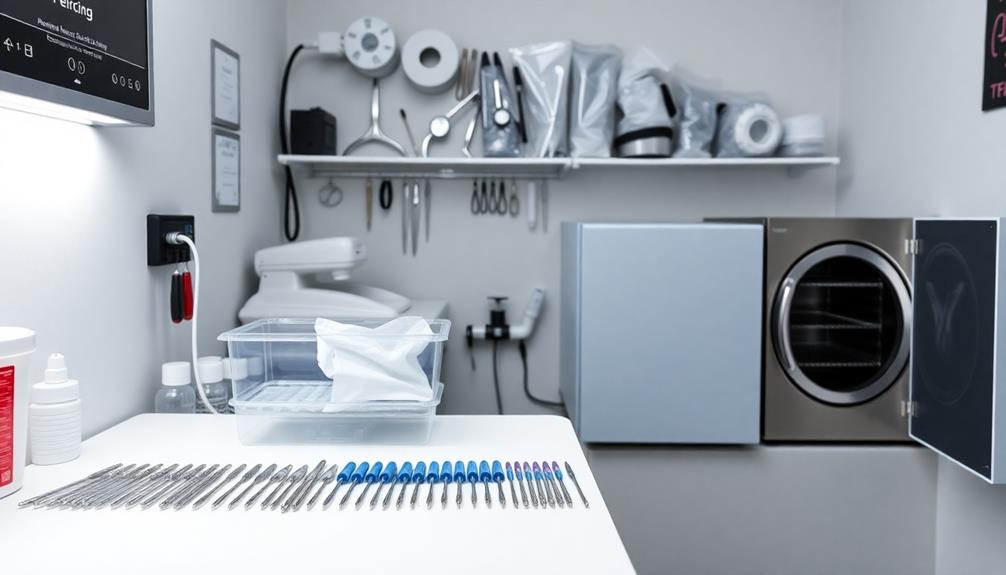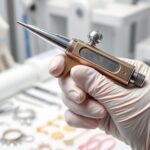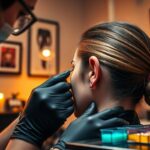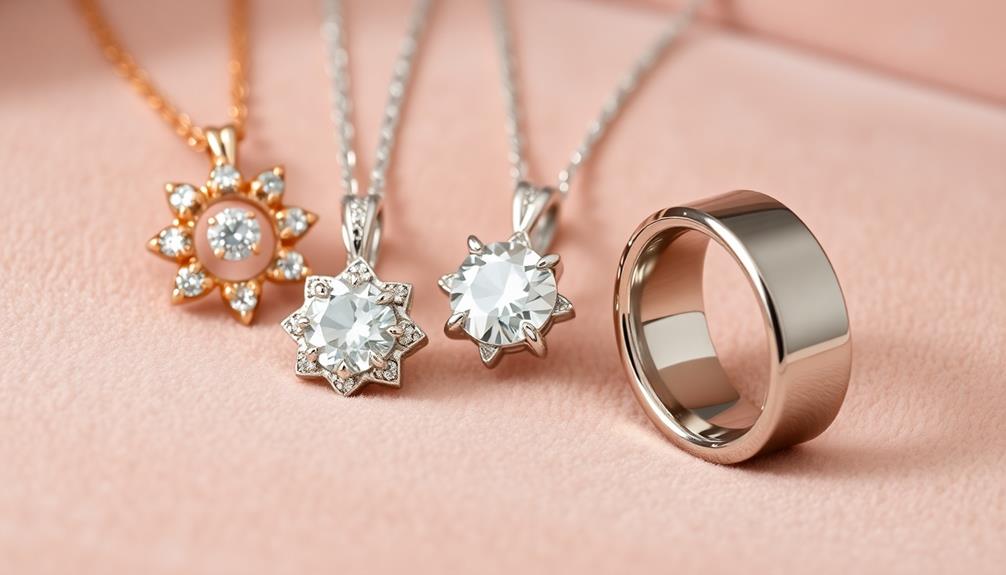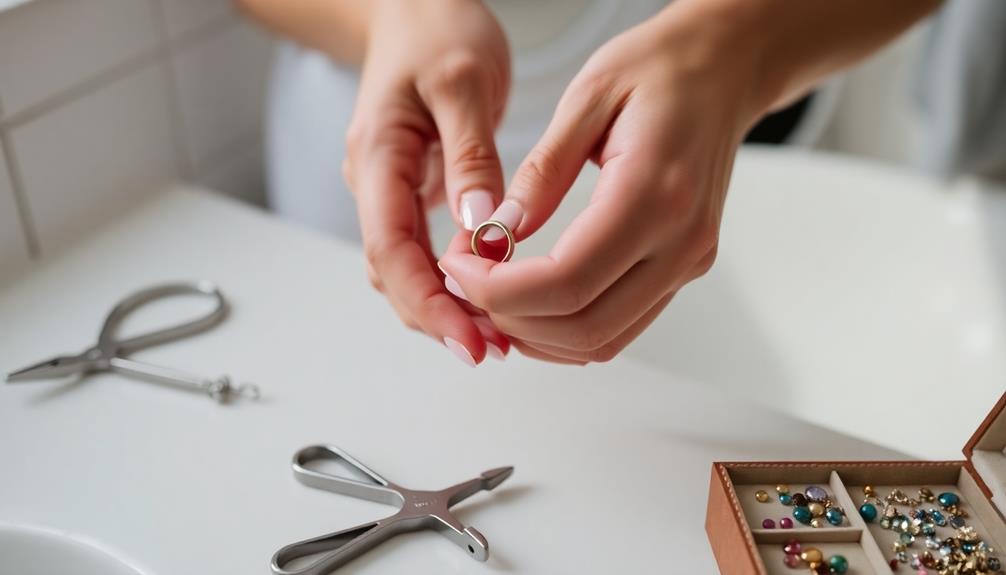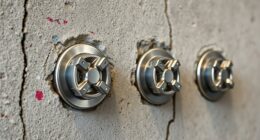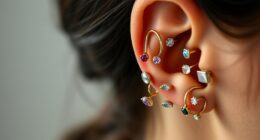Sterile equipment in piercing studios is critical for your health and safety. It greatly reduces the risk of infections and life-threatening diseases like Hepatitis C and HIV. When studios use autoclaves, they guarantee tools are free from harmful microorganisms. Regular cleaning and maintenance of this equipment is fundamental to maintain hygiene and compliance with safety standards. Without sterile tools, you could face severe health risks. Trust is essential in a piercing studio, and understanding the importance of sterilization helps you make informed choices for safer experiences. There's more to this topic that could help you secure your safety.
Key Takeaways
- Sterile equipment is vital to prevent infections and health complications during body piercings.
- Autoclaves are the gold standard for sterilizing tools, effectively eliminating harmful microorganisms.
- Regular maintenance and testing of sterilization equipment ensure ongoing efficacy and safety compliance.
- Non-sterile tools significantly increase the risk of transmitting bloodborne diseases like Hepatitis and HIV.
- Educating clients about sterilization methods fosters trust and promotes safer piercing experiences.
Significance of Sterile Equipment

Guaranteeing the use of sterile equipment in piercing studios is vital for your health and safety. When you choose to get a piercing, you want to be confident that the tools used are free from pathogens that could lead to infections and serious health complications. This is where the importance of sterilization comes in.
Piercing studios must use autoclaved tools, as this process effectively eradicates all microorganisms, including resistant spores, making your experience much safer.
Compliance with industry sterilization standards isn't just a legal requirement; it's a commitment to protecting clients from diseases like Hepatitis C and HIV. By adhering to these guidelines, piercing studios enhance their reputation and credibility, giving you peace of mind.
Regular spore testing of sterilization equipment is necessary, as it guarantees the effectiveness of the sterilization process.
Using only sterile needles and equipment is a fundamental hygiene protocol that greatly reduces the likelihood of post-piercing infections and promotes quicker healing.
When you understand the importance of sterile equipment, you empower yourself to make informed decisions about where to get pierced, guaranteeing a safer experience overall.
Autoclave Functionality and Benefits
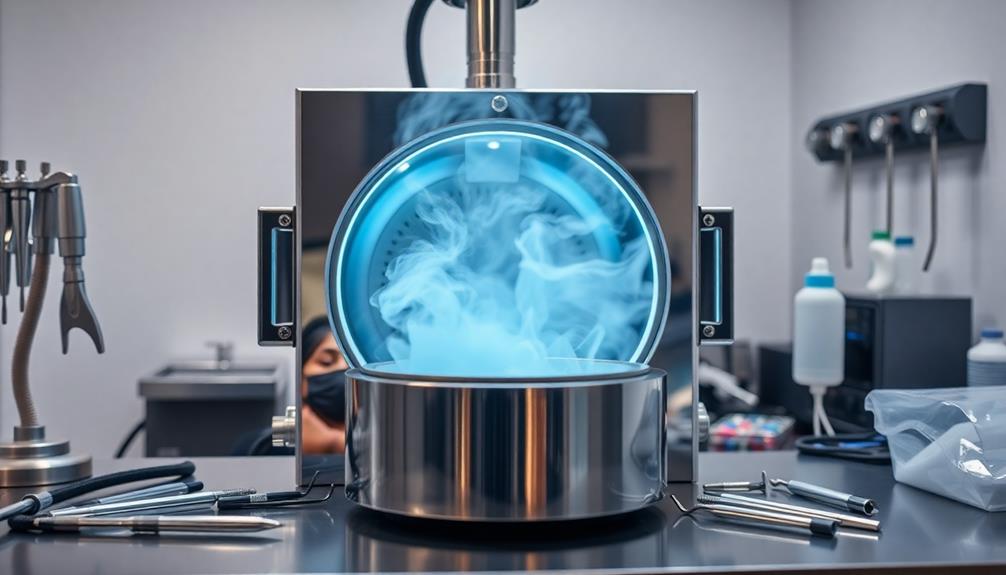
When you think about sterilizing piercing equipment, autoclaves stand out as a reliable choice.
They use high-pressure steam to eliminate all microorganisms, ensuring your tools are safe for use.
Plus, regular maintenance and testing are essential to keep them performing at their best.
Autoclave Operation Mechanism
Autoclaves play an essential role in maintaining hygiene standards in piercing studios by effectively sterilizing equipment with high-pressure saturated steam. These sterilization machines operate by reaching high temperatures between 121°C and 134°C, ensuring all microorganisms, including resistant spores, are killed. The process involves a significant vacuum phase that removes air, allowing steam penetration, which is essential for sterilizing complex instruments and porous materials.
| Phase | Functionality |
|---|---|
| Vacuum Phase | Removes air for effective steam penetration |
| Sterilization Phase | High temperature and pressure kill microorganisms |
| Cooling Phase | Allows safe handling of sterilized equipment |
For proper sterilization, loading items in sterilization pouches enhances steam circulation, ensuring uniform results. Regular maintenance and calibration of autoclaves are fundamental for peak performance, as they guarantee the accurate temperature and pressure settings necessary for effective sterilization. By implementing these best practices, you not only achieve reliable sterilization for reusable tattoo and piercing tools but also build client trust by showing a commitment to hygiene and safety standards.
Key Benefits of Sterilization
Maintaining a sterile environment in piercing studios offers numerous benefits that extend beyond mere compliance with health regulations. One of the main advantages is the significant reduction in the risk of infections, including life-threatening diseases like hepatitis and HIV.
When you use sterilized piercing equipment, you're not just protecting your clients; you're safeguarding your reputation as a practitioner.
Autoclaves are the gold standard for sterilization in the piercing industry. They use high-pressure saturated steam at temperatures between 121-134°C to effectively eliminate all microorganisms, including resistant spores.
This means the equipment you use is thoroughly sterilized and safe. The functionality of autoclaves also involves generating a vacuum to remove air, enhancing steam penetration to guarantee reliable sterilization of complex instruments.
Maintenance and Testing Requirements
Guaranteeing your autoclave operates effectively is essential for providing safe and sterile piercing services. Regular autoclave maintenance, including cleaning schedules and calibration checks, is critical to uphold sterilization efficacy. Testing your autoclave with biological indicators, such as spore tests, confirms that no viable microorganisms remain on your tools.
Here's a quick reference table to help you remember key maintenance tasks:
| Maintenance Task | Frequency |
|---|---|
| Cleaning Autoclaves | After every use |
| Biological Indicator Testing | Weekly |
| Calibration Checks | Monthly |
Proper training for your staff is imperative. They need to understand how to load and unload sterilization pouches correctly, recognize signs of malfunction, and guarantee sterilization cycles complete successfully. Additionally, maintaining documentation of all maintenance records is critical for compliance with health regulations. Partnering with certified service providers for regular inspections and repairs can enhance the reliability and longevity of your autoclave, guaranteeing you always meet sterilization standards. By prioritizing these maintenance and testing requirements, you can foster trust and safety in your piercing studio.
Sterilization Standards and Compliance
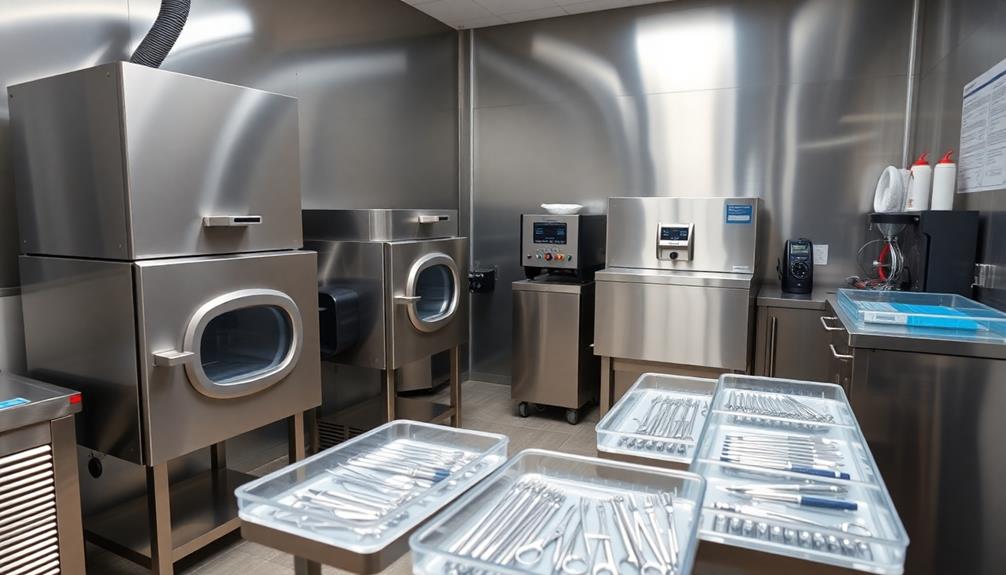
When you choose a piercing studio, you need to guarantee they comply with sterilization standards to keep yourself safe.
Understanding the importance of proper sterilization can prevent serious infections and reinforce your trust in their practices.
Safety Standard Compliance
In piercing studios, compliance with safety standards is essential for protecting both clients and practitioners. Using sterilised equipment is a fundamental part of this compliance, as it markedly reduces the infection risk associated with body piercings. Autoclaves play an essential role in this process. They effectively sterilise reusable piercing tools by eliminating all microorganisms, including resistant spores, guaranteeing that tools are safe for your use.
Beyond just equipment, the overall cleanliness of the studio is critical. Treatment rooms and restrooms must meet the hygiene standards expected by regulatory agencies to uphold client safety.
Regular testing and maintenance of sterilisation equipment, like autoclaves, are necessary to verify they function correctly and adhere to established safety protocols.
It's also important to document all sterilisation procedures. Keeping records of spore test results and equipment maintenance not only demonstrates compliance with health regulations but also builds trust with clients.
When you choose a piercing studio that prioritises these safety standards, you're making a smart choice for your health and well-being. Always ask about their compliance practices to guarantee your piercing experience is as safe as possible.
Importance of Sterilization
A proper sterilization process is imperative in piercing studios to protect your health and minimize the risk of infections. Compliance with established sterilization standards is essential to guarantee that all piercing tools are free from contaminated equipment.
The primary method recommended for sterilizing reusable equipment is the autoclave, which uses high-pressure steam to eliminate all microorganisms effectively.
Before you can trust any piercing tools, they must undergo thorough cleaning to remove all organic matter. This step enhances the effectiveness of the sterilization process.
After cleaning, the tools should be placed in sterilization pouches or containers that guarantee a sealed environment during the autoclaving process.
Regular testing and maintenance of the autoclave are critical to ensure its reliability and effectiveness in achieving ideal sterilization results.
Risks of Non-Sterile Equipment

How can you guarantee your safety during a body piercing? One of the most essential steps is ensuring that the piercing studio uses sterile equipment. Non-sterile equipment greatly increases your risk of infections. Contaminated tools can harbor harmful microorganisms like bacteria and viruses, which can lead to severe health issues such as impetigo.
More alarmingly, using unsterilized tools can transmit bloodborne diseases like Hepatitis B, Hepatitis C, and HIV. These pose serious health risks not only to you but also to the practitioners.
Infection rates related to body piercings can skyrocket to 10-20% when non-sterile techniques are employed. This underscores the importance of stringent sterilization practices in piercing studios.
Infections can lead to allergic reactions and complications that may require medical attention, greatly impacting your overall health. Additionally, maintaining sterile equipment is essential for client safety and the studio's reputation.
Failing to adhere to hygiene standards can result in potential lawsuits and loss of clientele. So, when considering a body piercing, always prioritize a studio that emphasizes the importance of sterilization to protect your health.
Alternative Sterilization Methods

Guaranteeing the use of sterile equipment goes beyond just relying on autoclaving, which is the gold standard for sterilization in piercing studios.
While autoclaves are highly effective, alternative methods can also play an essential role, especially for heat-sensitive items. Ethylene oxide gas, for example, is an effective option for sterilizing without exposing items to high temperatures.
Another alternative is chemical sterilization, which utilizes substances like formaldehyde. However, you need to handle these chemicals carefully due to their potential toxicity.
It's significant to mention that flame sterilization is highly discouraged; it poses a contamination risk and doesn't guarantee the complete eradication of pathogens.
Boiling water, while commonly thought to be a disinfectant, is ineffective against certain bacteria and spores, making it an unreliable method for sterilizing your piercing tools.
To guarantee the effectiveness of any alternative sterilization method you choose, regular spore testing and the use of chemical indicators are essential. This ongoing verification process helps confirm that your equipment remains safe for your clients and free from harmful pathogens.
Infection Prevention Strategies
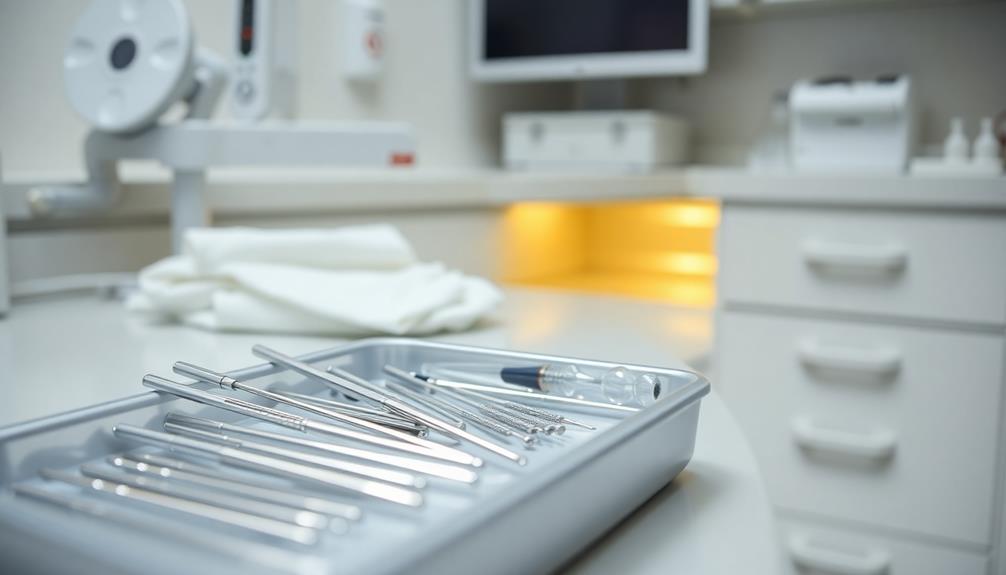
Infection prevention in piercing studios is crucial for safeguarding both clients and practitioners. To effectively prevent the spread of infections, it's essential to use sterilised tools, especially tattoo needles. Instruments should be sterilised using an autoclave, a device that eliminates harmful microorganisms, including resistant spores.
Regular spore testing of the autoclave guarantees it operates efficiently, maintaining high hygiene standards. Practitioners must also prioritize hand hygiene before and after each procedure. Clean hands help prevent the transmission of infectious diseases like Hepatitis B, C, and HIV.
Compliance with safety standards in sterilisation protocols not only protects clients but also builds trust, showcasing the studio's dedication to their health and safety. Using single-use, sterilised equipment is another crucial strategy. This practice minimizes the risk of cross-contamination and guarantees that every client receives a safe and hygienic experience.
Importance of Client Education
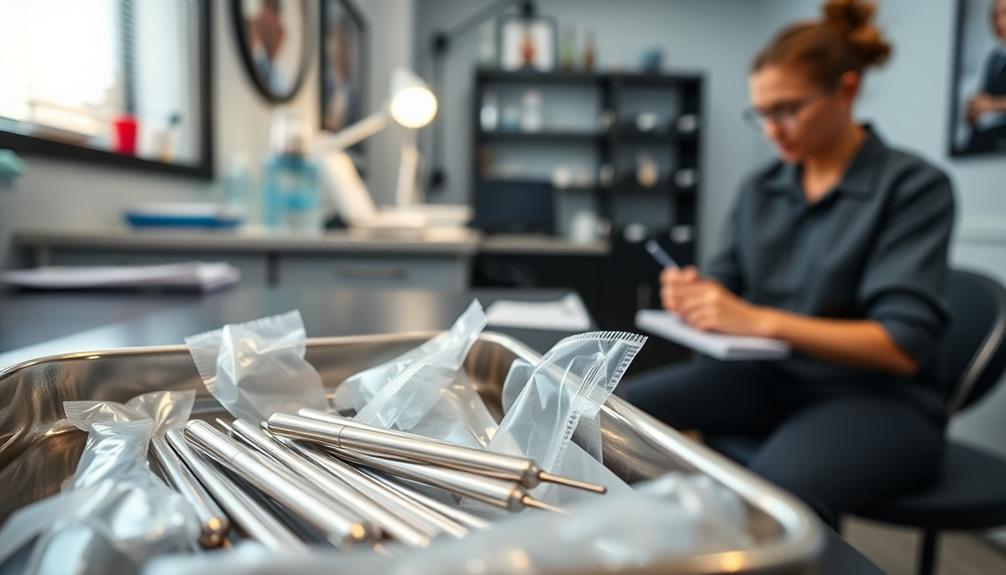
When you step into a piercing studio, understanding the importance of client education can greatly enhance your experience and safety. First, knowing about the sterilization methods used helps foster trust and confidence in the processes. When you're informed about how sterile equipment is prepared and the risks associated with non-sterile practices, you're better equipped to make safe choices.
Additionally, being aware of proper piercing care and hygiene can help you maintain your new piercing effectively. It's crucial to discuss sterilization indicators, like chemical and biological tests, as these reassurances confirm that rigorous safety procedures are followed. Furthermore, when studios share spore test results and sterilization logs upon request, it boosts transparency and reinforces their commitment to hygiene.
Client education doesn't stop at the piercing itself. Regular discussions about aftercare procedures can greatly reduce the risk of infection and promote ideal healing. By understanding how to care for your new piercing, you actively participate in infection prevention.
In essence, being educated on these aspects transforms your experience from passive to proactive, ensuring you feel secure and informed every step of the way. So, take the time to ask questions and learn; it's your health and safety at stake!
Maintenance of Sterilization Equipment
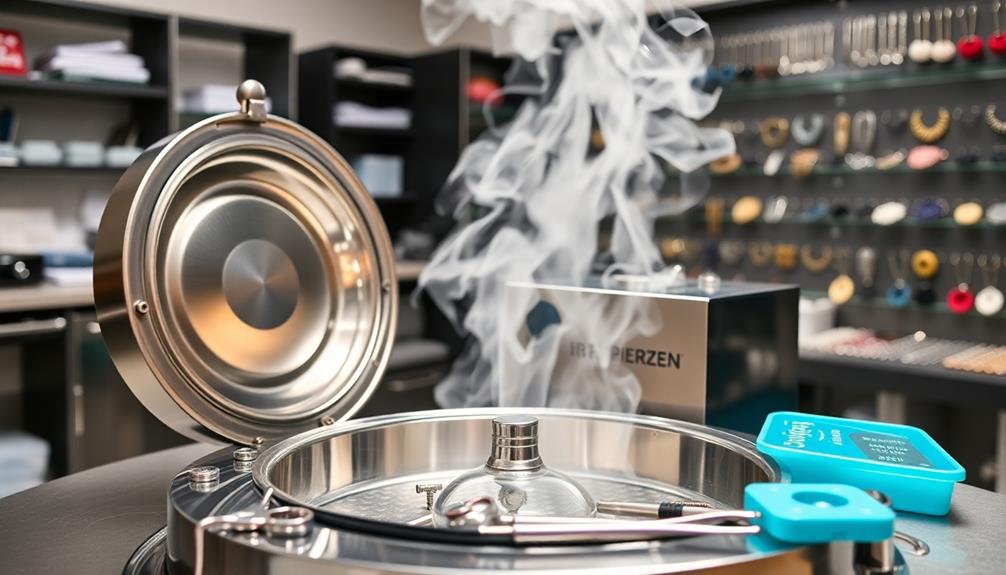
Maintaining sterilization equipment, like autoclaves, is vital for any piercing studio committed to safety. Regular cleaning and maintenance prevent contamination from residue buildup, guaranteeing your equipment performs at its best.
Make it a priority to perform routine calibration checks, confirming that your sterilization equipment operates at the correct temperature and pressure settings necessary for effective sterilization.
Document all maintenance activities meticulously, detailing cleaning, calibration, and repairs. This practice not only helps uphold compliance with safety standards but also provides a clear record of your studio's commitment to hygiene.
Staff training is essential; make certain that your team knows how to operate and maintain the sterilization equipment properly. This knowledge enhances safety, as your personnel will be aware of best practices and signs of malfunction.
Establishing relationships with qualified service providers for regular inspections and maintenance is another key step. These professionals can detect and resolve issues with your sterilization equipment before they compromise safety.
Frequently Asked Questions
Why Is It Important to Use Sterile Equipment?
Using sterile equipment's essential because it prevents infections and complications. When you choose sterile tools, you're protecting yourself from harmful bacteria and viruses, ensuring a safer, cleaner experience during your piercing procedure.
What Do Piercers Use to Sanitize?
Like a chef sanitizing kitchen tools, piercers use autoclaves to sterilize reusable equipment. They also employ ultrasonic cleaners for dirt removal and rely on disposable tools and chemical disinfectants for items that can't handle heat.
Do Piercers Need an Autoclave?
Yes, you need an autoclave. It effectively sterilizes reusable tools, ensuring safety by eliminating harmful microorganisms. Regular spore tests confirm its efficacy, helping you maintain a hygienic environment and protect your clients from potential infections.
What Do Piercers Use to Clean Tools?
Piercers use ultrasonic cleaners to remove dirt and debris from tools, and then they often sterilize them in autoclaves. For surfaces, they use medical-grade disinfectants to guarantee everything's as clean as possible before procedures.
Conclusion
In the world of body art, sterile equipment isn't just a precaution; it's your shield against infection. By prioritizing sterilization, you're not only protecting yourself but also ensuring a safe experience for every client who walks through your door. Think of each sterile tool as a promise—a commitment to health and safety that speaks volumes. So, embrace these practices and educate your clients, creating a culture of care that resonates far beyond the piercing chair.
Hi, my name is Danielle, and I’m an author for piercings-body.com. I have a passion for writing and love to share my knowledge on all things body piercing-related. I’m also a huge advocate for safe body modification practices and believe everyone should be able to make informed decisions about their bodies. When I’m not writing or blogging, I enjoy spending time with my family and friends, practicing yoga, and exploring new places.

